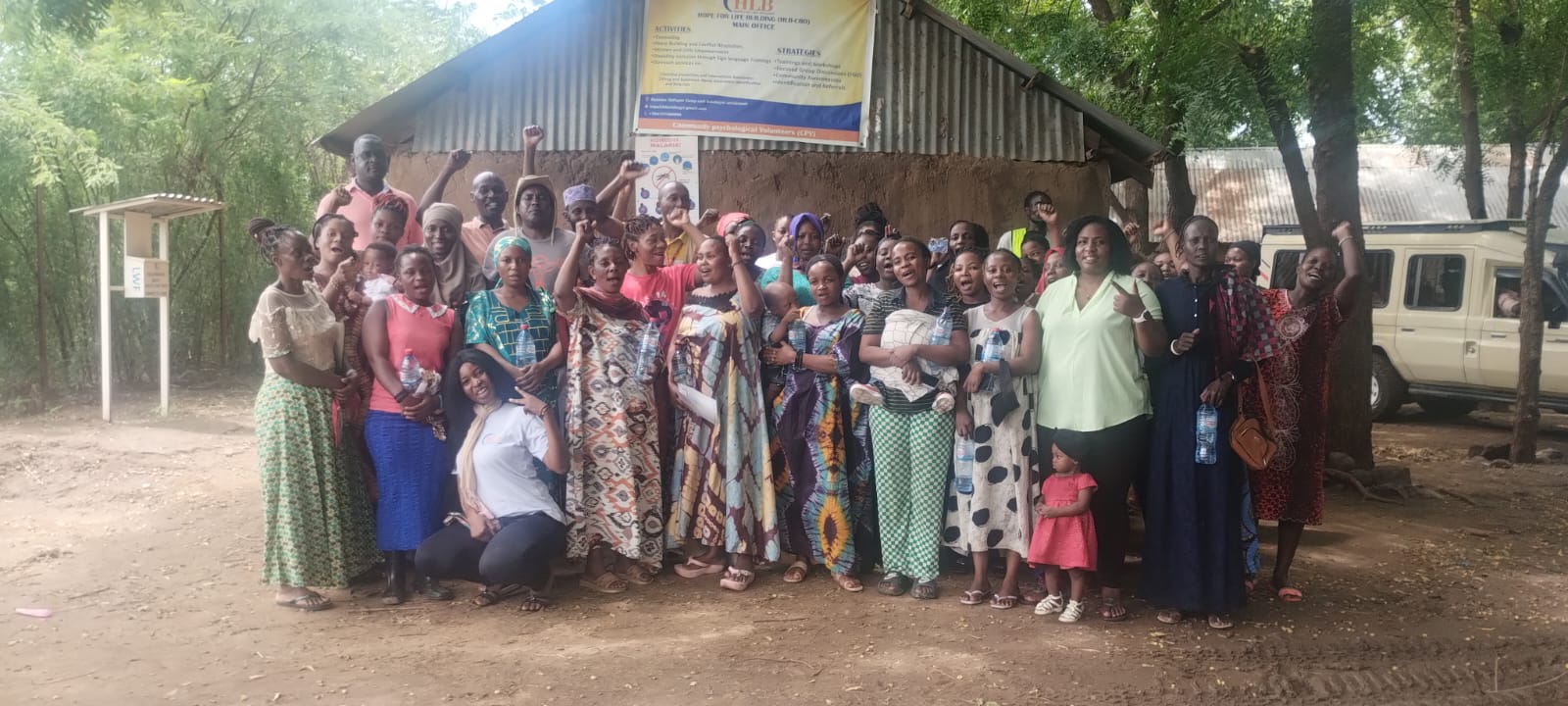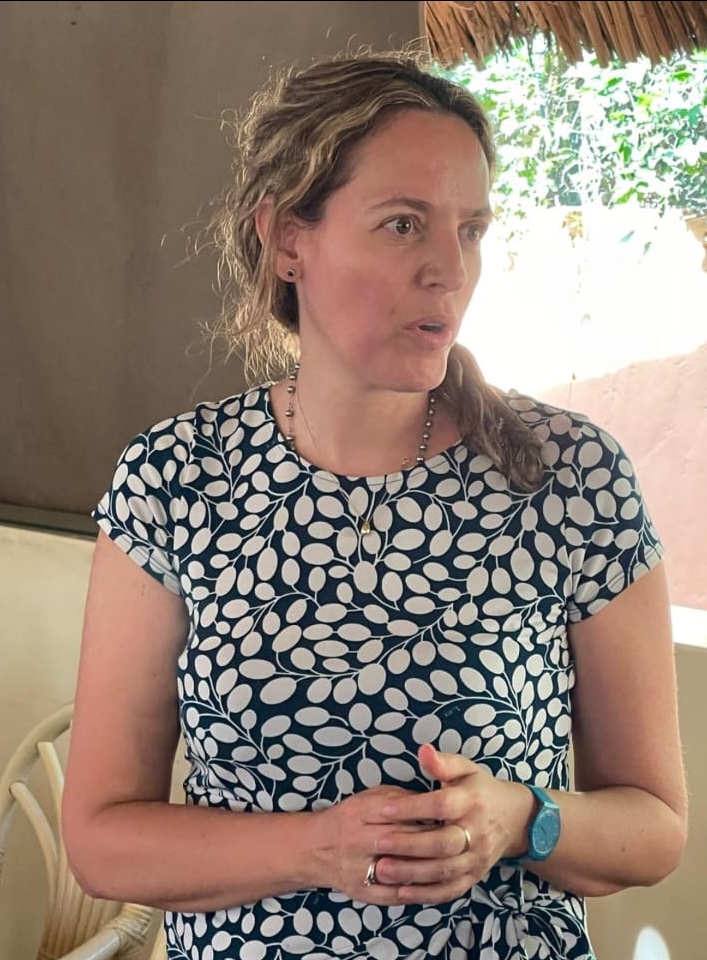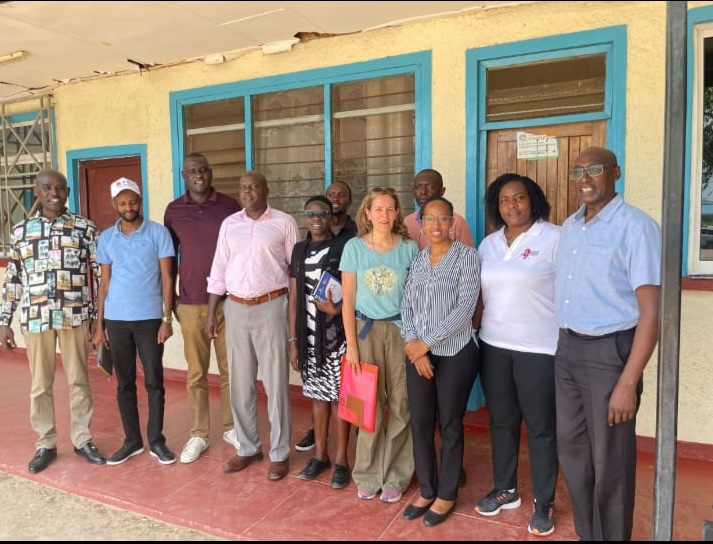Para hacer una donación segura en línea, haga clic en el siguiente botón



En el paisaje árido y azotado por el viento del condado de Turkana, en el noroeste de Kenia, el campo de refugiados de Kakuma lleva más de tres décadas siendo a la vez refugio y lugar de tensiones. Hogar de más de 300.000 refugiados de más de 22 nacionalidades, Kakuma se ha convertido en un símbolo de resistencia y complejidad. Sin embargo, bajo la superficie se esconde una comunidad que se enfrenta a cuestiones urgentes de identidad, integración y justicia.
En abril de 2025, el Programa de Protección de Refugiados (RPP) Instituto Auschwitz, en colaboración con la Comisión Nacional de Cohesión e Integración (NCIC) y el Consorcio de Refugiados de Kenia (RCK), lanzó públicamente una nueva iniciativa para reforzar la cohesión social entre los refugiados y la comunidad de acogida en Turkana.
Este proyecto de dos años representa el capítulo más reciente de la misión global de RPP de ayudar a crear sistemas nacionales de protección que prevengan las crisis de desplazamiento, las violaciones de los derechos humanos y las atrocidades masivas antes de que se agraven.
Para el Programa de Protección de Refugiados (RPP) Instituto Auschwitz, esta iniciativa no es un esfuerzo aislado, sino que forma parte de un enfoque estructurado y multifásico para reforzar los sistemas de protección. Este proyecto también marca nuestra entrada en la tercera fase en Kenia: proporcionar apoyo político experto y profundizar en la colaboración a largo plazo con las partes interesadas locales y nacionales.
Nuestra misión comenzó cuando aterrizamos en Lodwar el 28 de abril y viajamos a Kakuma. Sabía que esto sería algo más que otra visita sobre el terreno.Turkana es extensa, calurosa y llena de desafíos. Kakuma, uno de los campos de refugiados más antiguos de África, se ha convertido en un hogar permanente para miles de desplazados por la guerra y la crisis. Pero también es un lugar donde las etiquetas -refugiado, anfitrión, migrante, extranjero- siguen dividiendo a las comunidades que intentan coexistir.
Del 28 de abril al 1 de mayo, me reuní sobre el terreno con colegas de la Comisión Nacional para la Cohesión y la Integración (NCIC) y nuestro socio ejecutor RCK para poner en marcha un proyecto centrado en promover la coexistencia pacífica entre las comunidades de refugiados y de acogida en Kakuma y Kalobeyei.
Me acompañó Jacob Amai, Director de la Oficina para África de la AIPG. Su presencia subrayó nuestro compromiso común de abordar las complejas dinámicas en juego, y fue clave para formalizar nuestro papel como socios financieros en la iniciativa. Nuestro objetivo no era simplemente identificar los problemas, sino fomentar un diálogo honesto, el respeto mutuo y, lo que es más importante, reconocer nuestra humanidad común.

Esta visita se basó en escuchar al gobierno del condado, a los líderes locales, a los grupos de jóvenes y mujeres, a los actores religiosos y, sobre todo, a los propios refugiados y anfitriones. Nos reunimos con el Comisario del Condado de Turkana, el Vicegobernador, el Presidente de la Asamblea del Condado y representantes del Departamento de Consolidación de la Paz y Gestión de Conflictos. Su mensaje era claro: la gente está deseosa de cambios, pero cansada de promesas incumplidas.
El 29 de abril convocamos en Kakuma un foro consultivo de partes interesadas bajo el lema "Promover la cohesión social para una coexistencia pacífica". Los participantes, tanto de las comunidades de refugiados como de las de acogida, hablaron con franqueza de los retos: desconfianza, comunicación fragmentada, necesidades contrapuestas y falta de plataformas para un diálogo significativo. El foro no resolvió estos problemas, pero abrió la puerta al diálogo.
Una frase seguía apareciendo: "Somos iguales". Podemos proceder de entornos diferentes, sí, pero compartimos nuestras necesidades de protección, dignidad y pertenencia. Ese reconocimiento es significativo. Es un comienzo.
.jpeg)
Sería negligente no mencionar un reto clave que surgió durante el foro. Muchas partes interesadas, sobre todo de la comunidad, veían el proyecto como una fuente potencial de beneficios financieros directos.Hay grandes expectativas de que esta iniciativa "aporte algo" tangible.Esto es habitual en contextos humanitarios, sobre todo cuando la fatiga de los donantes y las necesidades insatisfechas están muy extendidas.
Pero también es una señal de alarma. Es esencial gestionar las expectativas y comunicar claramente los objetivos del proyecto. Esta iniciativa trata de fortalecer las relaciones, fomentar el diálogo y mejorar la protección, no de prestar servicios directos. Es un trabajo delicado y deliberado. Y debe hacerse con transparencia.
También surgió cierta confusión en relación con el Plan Shirika, un marco del gobierno de Kenia para la integración de los refugiados. Aunque ese plan ofrece un contexto nacional importante, nuestro proyecto no forma parte de él. Más bien, nuestra labor complementa los esfuerzos nacionales, pero se basa en la metodología de prevención del RPP y se centra en el apoyo práctico basado en políticas.
Esta misión nos permitió generar confianza, conectar con los actores clave y dar juntos ese primer paso fundamental. La siguiente fase se centrará en apoyar un proceso participativo que invite tanto a los refugiados como a los miembros de la comunidad de acogida a diseñar conjuntamente una hoja de ruta para la cohesión social en Turkana. El sentimiento de apropiación local del que hemos sido testigos nos da esperanzas. La ejecución correrá a cargo de NCIC y RCK.
Para el Programa de Protección de Refugiados de AIPG, este trabajo representa exactamente lo que nos esforzamos por hacer: integrar soluciones a largo plazo en los lugares donde más se necesitan.
Kenia forma ahora parte de esa historia. Y Kakuma, con todos sus retos, nos está ayudando a escribir el siguiente capítulo.
.jpeg)
